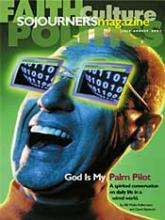For decades people have dreamed, strategized, and organized around the vision of a nonviolent peace force. Mahatma Gandhi was building the Shanti Sena (Peace Army) when he was assassinated. More recently, Peace Brigades International (PBI), Witness for Peace, and others have advanced the concept of nonviolent intervention with important successes in Central America. For example, after two grassroots leaders were murdered in the mid-1980s, Peace Brigades provided unarmed bodyguards to human rights activists in Guatemala; no more leaders of the grassroots organization were killed.
The courageous work of that grassroots organizationknown as the Mutual Support Groupled to a reopening of civil society in Guatemala. "Thanks to their presence, I am alive," said Nineth Garcia Montenegro, formerly a leader of the group and now a member of the Guatemalan congress. "That is an indisputable truth."
Peace Brigades International, recently nominated for the Nobel Peace Prize, has 35 unarmed accompaniers in Colombia who are effectively protecting human rights workers and others in the zones of peace. Christian Peacemaker Teams has two small teams providing a peaceful presence in Israel/Palestine. Germany has begun fielding a civilian peace service.
The vision of a global nonviolent peace force came to Mel Duncan in a Buddhist monastery where Thich Nhat Hanh teaches. "We have too many people taking sides," Thich Nhat Hanh explains. "See that the most essential thing is life." A similar vision came to David Hartsough in a Serbian jail where he had been locked up for supporting the Kosovar Albanian nonviolent movement. When Kosovo exploded in early 1998, the world did not respond to the invitation of the Kosovar nonviolent movement for international nonviolent observers.
Read the Full Article
